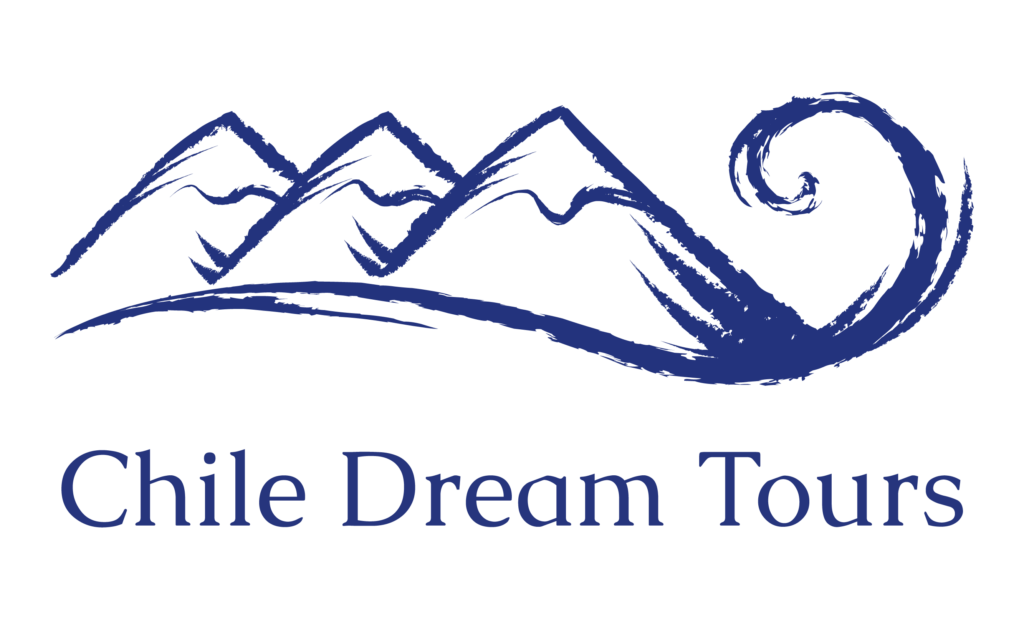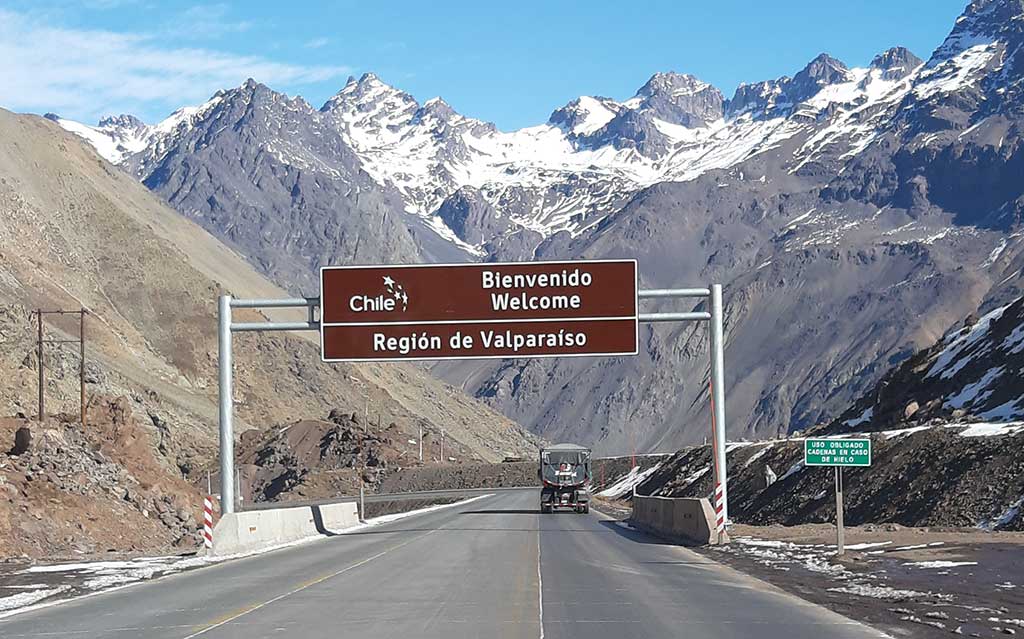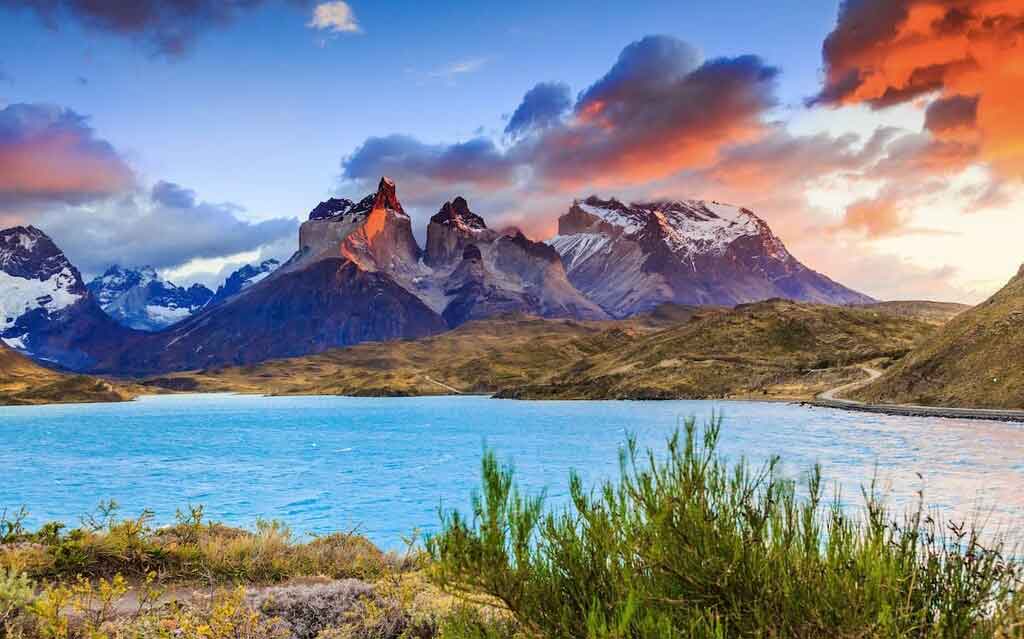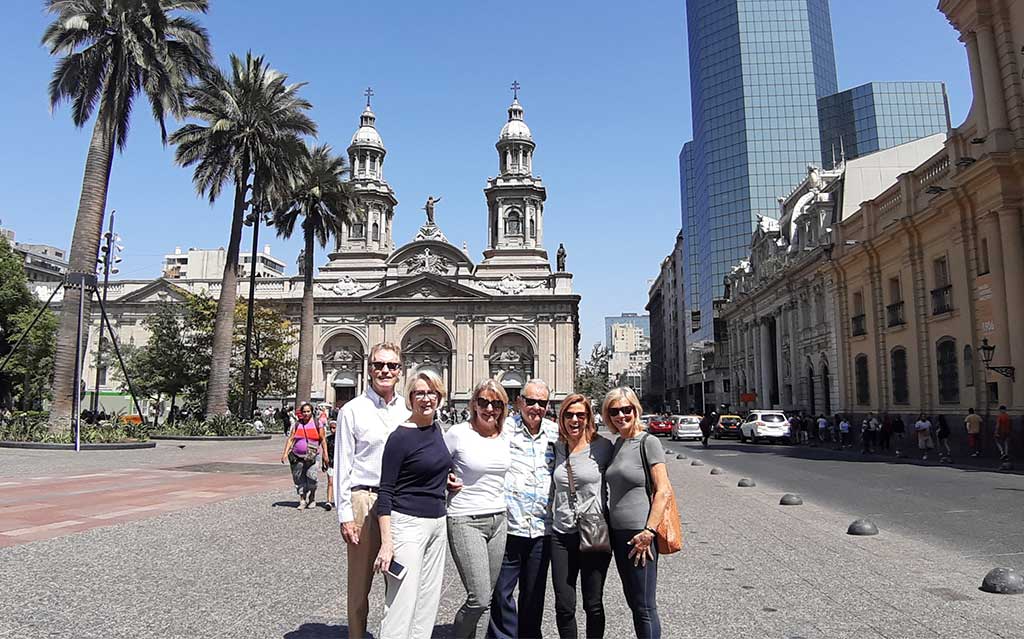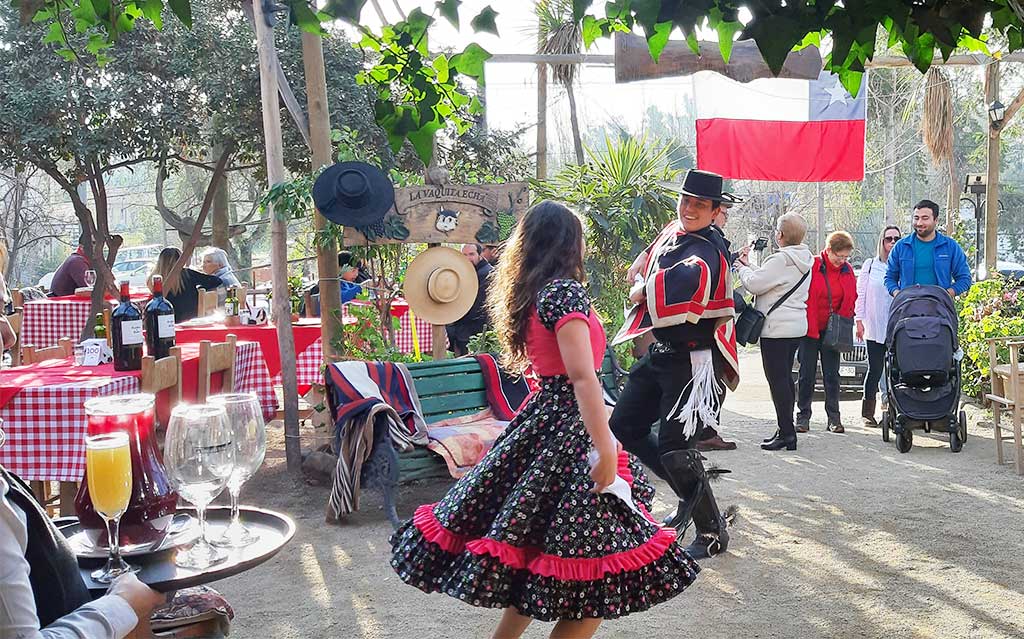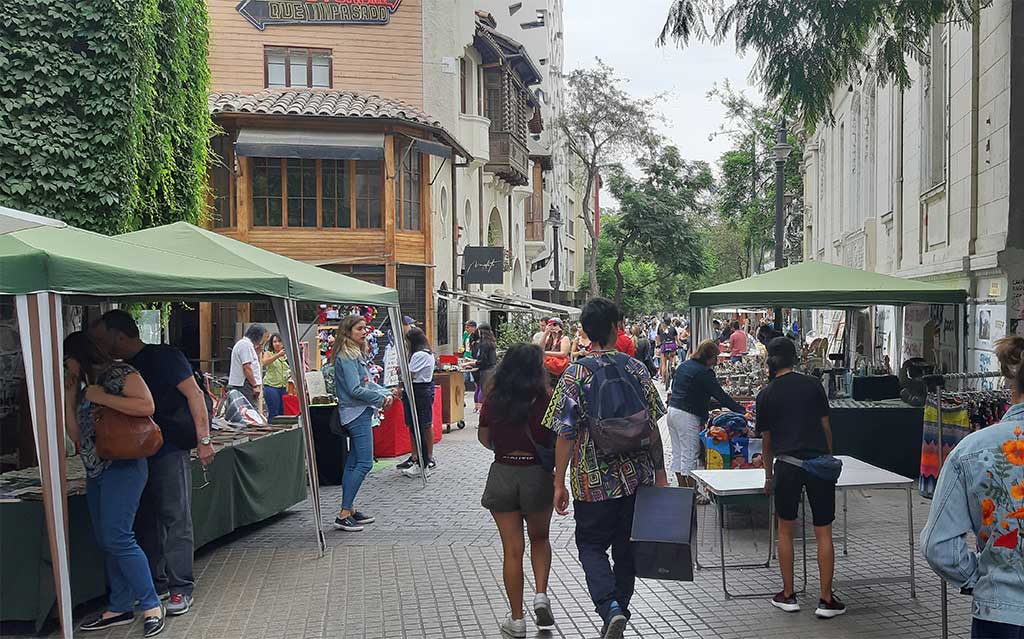“In the beginning of time, God created the wonders of the world. When he finished, however, he saw that he had many leftover pieces. He had parts of rivers and valleys, of oceans and lakes, of glaciers and deserts, of mountains and forests, and of meadows and hills. Rather than to let such beauty go to waste, God put them all together and cast them to the most remote corner of the earth. This is how Chile was born.” – A Chilean Legend.
Chile is the longest and thinnest country in the world running from the Andes to the Pacific. The country shares borders with Argentina, Peru and Bolivia. Chile also has territories in Polynesia and Antarctica, making it a tri-continental nation.
From the high Andean plateau to the untouched southern regions at the end of the Earth, Chile invites you to live adventures in the middle of the world’s driest desert, the Atacama, in the unique rainy temperate forests of the Lakes Region, in front of millennial glaciers that are waiting to be discovered in Patagonia, or under the watchful eye of the Andes in the middle of the buzz of modern cities like its capital, Santiago.
These cultural and climatic contrasts have left an imprint on the identity of the country and its people. Warm, energetic, approachable and kind, Chileans share the love for their land, which invites you to build relationships beyond boundaries, to live unique experiences, and to discover their country.
Official name: The Republic of Chile (La República de Chile)
Land area: 289,112 sq mi (748,800 sq km)
Total area: 292,260 sq mi (756,950 sq km)
Population: 18,950,000, including 1.492.500 foreign-born immigrants (2021)
Capital: Santiago, 6,811,595 million (2021)
Nationality: Chilean
Currency: Chilean Peso
Languages: Spanish 99.5% (official), indigenous languages 0.5% (includes Mapudungun, Aymara, Quechua, Rapa Nui).
Ethnicity/race: white and non-indigenous 88.9%, Mapuche 9.1%, Aymara 0.7%, other indigenous groups 1% (includes Rapa Nui, Likan Antai, Quechua, Colla, Diaguita, Kawesqar, Yagan or Yamana), unspecified 0.3%.
Religions: Roman Catholic 66.7%, Evangelical or Protestant 16.4%, Jehovah’s Witnesses 1%, other 3.4%, none 11.5%, unspecified 1%.
Life Expectancy: 80.4 years
Literacy rate: 97.5%
Chile runs 4,300 kilometer (2,600 miles) along South America’s west coast, almost half the continent. The country is never more than 180 kilometers (110 miles) wide. Thanks to its geographical location you can arrive by air, sea or land from its neighboring countries.
The main access by plane is through the airport that is most frequently used and which has the most international connections, the Arturo Merino Benitez Airport in Santiago. But there are another six international airports located in the cities of Arica, Iquique, Antofagasta, Easter Island, Puerto Montt and Punta Arenas.
By land, the shared border crossings with its neighboring countries allow you to enter Chile from Peru through Arica; from Bolivia to Arica, Iquique and Antofagasta and from Argentina in more than 50 crossings, with the busiest ones near La Serena, Santiago and Osorno.
By sea, the main Chilean ports, Valparaiso and San Antonio in particular, receive cruise ships with travelers from around the world.
To enter Chile, you must present your identification documents, such as your national ID card and/or passport. And, depending on your country of origin, a stamped visa.
Citizens from the European Union, United States, Canada and Australia do not need tourist visas. However, individuals from some countries may be required to pay a tax in cash (reciprocity tax) upon entering the country.
Also, if you are bringing animal or vegetable products into the country, upon entering you must declare them to the Agriculture and Livestock Service (Servicio Agrícola y Ganadero – SAG); this way, you will be contributing to protecting the varied flora and fauna of the country.
Since 1975, the Chilean currency has been the Peso, with coins equal to 10, 50, 100 and 500 pesos and bills of 1,000, 2,000, 5,000, 10,000 and 20,000 pesos.
In the many cities of the country it is relatively easy to find ATMs that provide local currency. At the same time, most of the established stores allow paying with international debit and credit cards.
Although some shops in Chile accept Dollars and Euros, it is better to obtain Pesos at official currency exchange offices as the exchange rate will be better.
In Chile, the standard voltage is 220 V and the frequency is 50 Hz. You can use your electric appliances in Chile, if the standard voltage in your country is in between 220 – 240 V (as is in the UK, Europe, Australia and most of Asia and Africa). Manufacturers take these small deviations into account. If the standard voltage in your country is in the range of 100 V – 127 V (as is in the United States, Canada and most South American countries), you will need a voltage converter in Chile. You can also consider a combined power plug adapter/voltage converter.
If the frequency in Chile (50 Hz) differs from the one in your country, it is not advised to use your appliances. But if there is no voltage difference, you could (at your own risk) try to use the appliance for a short time. Be especially careful with moving, rotating and time-related appliances like clocks, shavers or electric fan heaters.
To be sure, check the label on the appliance. Some appliances never need a converter. If the label states ‘INPUT: 100-240V, 50/60 Hz’ the appliance can be used in all countries in the world. This is common for chargers of tablets/laptops, digital cameras and cell phones.
The length of Chile allows it to host every imaginable climatic zone. In the north is one of the driest deserts in the world where some parts have never recorded even trace amounts of precipitation! Moving south you will encounter an agricultural valley the size of California, and then a province of mountain lakes and volcanos – the famous Lakes Region. Further south are the wilds of Patagonia, a landscape of fjords, islands, and glaciers. Chile’s far southern tip points towards the polar ice of Antarctica.
Atacama Desert
The northern area of the country is dominated by the Atacama Desert. Despite its arid and tropical latitude, the Atacama is a remarkably temperate desert, moderated by the Pacific Ocean’s cool, north-flowing Humboldt current, which parallels the coast. Areas of the Atacama erupt with wildflowers in rare years of substantial rain that often follow El Niño weather patterns. Parts of this province support a rich agriculture industry founded on irrigation in the major river valleys, especially the Elqui Valley. Extensive cloud cover and thick fogs known as “camanchaca” caused by high humidity often encompass the coastal range.
Santiago & Central Valley
The middle part of Chile is the fertile heartland. Agriculture is a mainstay in this area that enjoys a Mediterranean climate, with maximum temperatures averaging 82°F (28°C) in January and 50°F (10°C) in July. The rainy season lasts from May to August. Evenings and nights can be cool, even during the summer.
Lakes Region
This is the most popular tourist area in the country. Snowcapped volcanos, many of which are still active, frame its numerous lakes. Climatically the area resembles the United States’ Pacific Northwest, with pleasant but changeable summer weather and cool, damp winters. Winter brings snow in the higher altitudes, and skiing is a popular wintertime activity. Puerto Montt’s average summer high is 57°F (14°C) and wintertime temperatures average 45°F (7°C).
Patagonia
The area south of Puerto Montt covers about 30% of the total land area of Chile. It is a rugged, mountainous area of tremendous beauty. Westerly winds and storms often drop enormous amounts of snow and rain on the seaward slopes.
In the Magallanes and Tierra del Fuego areas, temperatures in summer average 52°F (11°C). Dampness and wind chill can make it feel cooler so be prepared by having a number of layers and good waterproof gear with you. The weather year-round is highly unpredictable, and in summer be prepared for incessant winds that do lessen in the winter.
Easter Island
Rapa Nui enjoys a subtropical climate; winds and ocean currents strongly influence the weather patterns. The hottest months are January and February, while the coolest are July and August. The average summer temperature is 83°F (28°C) and the average minimum is 59°F (15°C). The average winter maximum is 72°F (22°C) and the minimum is 57°F (14°C), although when winds blow in from Antarctica with pouring rain it can feel a lot colder. Light showers are the most common form of precipitation with May being the wettest month.
No vaccinations are required to enter Chile. However, as when travelling to any country abroad, we would recommend that visitors observe a few routine precautions.
Tap water throughout the country is generally safe to drink, though visitors should exercise caution in rural areas and in the desert north. This means that raw fruit and vegetables may be safely consumed as long as they are properly washed.
Cholera is not a problem in Chile, although random cases have been reported – usually in rural areas.
Mountain sickness can affect anyone at altitudes above 10,000 feet (3,000 meters). The symptoms of mountain sickness include headache, nausea and/or shortness of breath. About half of the people visiting high altitudes suffer from at least one symptom in the first two days and then quickly recover. In most cases, rest and two aspirins will relieve the discomfort. Sensible precautionary measures include sticking to a schedule of mild activity, drinking plenty of non-alcoholic fluids (up to 5 litres a day), not smoking, avoiding sedatives (such as sleeping pills) which tend to depress respiration and limit oxygen intake.
For up to date information on the latest health and vaccination recommendations, please contact your doctor.
When traveling to a foreign country, it is always a good idea to have an understanding of the official language. Even if you only know how to say “hello” and “goodbye,” the locals will appreciate your multilingual effort!
In Chile, Spanish is the official language, however indigenous languages are still present. In the northern Andean area, you can discover Aymara and Quechua. The Rapa Nui or Easter Island language enchants the Polynesian Easter Island. And Mapudungun covers some areas of the south of the country with a mystic aura, thanks to the Mapuche people. English is commonly understood in the major cities, especially in Santiago. However, never assume that an individual speaks English. It is always polite to ask. Chilean youth like to practice English with foreigners, so it is even more helpful if you know a few, basic Spanish phrases. That way you can share a cultural learning experience!
The staff at most hotels, restaurants, and major tourist locations will speak English.
Basic Spanish phrases to know:
- Hola – Hello
- Chao – Goodbye
- Por favor – Please
- Perdón – Excuse me
- Gracias – Thank you
- De nada – You’re welcome
While the official language in Chile is Spanish, the population speaks a “Chilean” version of it. Chilean Spanish includes many local and foreign idioms and aboriginal words, which make the language very unique and typical of this country. Chilean Spanish is known to be the fastest Spanish in the world. People tend not to pronounce the letter “s” at the end of words. It can become hard for non-Chileans to understand and that is why it can be useful to take note of some of the most common words and phrases you may hear while you travel to Chile. Here is a list of the some of these:
- ¿Cachai? – said at the end of a sentence, roughly translated as “You know what I mean?”, “Am I right?”, or “Get it?”
- Al tiro – right now, immediately
- Po – said at the end of a sentence in order to give emphasis to what has just been said (¡Claro, po! = “Of course!”)
- Chela – beer
- Copete – cocktail
- Bacán/La raja – cool, great, amazing
- La micro – the city bus
- El taco – city traffic
- Tener caña – to be hungover
- Estar copeteado – to be tipsy (it comes from copete = cocktail)
- Tomar once – to have a light lunch or dinner at 5 pm (Sometimes people skip dinner and this teatime becomes the last meal of the day. Teatime, or “once” – the Spanish word for “eleven” – is a custom introduced by British immigrants. At teatime, Chileans drink “té con leche” – tea with milk – and perhaps eat sandwiches or bread and cheese.)
- ¡Fome! – boring
- Pololo/Polola – boyfriend/girlfriend
- Carrete – party
- Caleta – a lot (“me gusta caleta” = I like it a lot)
- Tinkar – to fancy (“¿Te tinka?” = Do you want to do it?)
- Rico/Rica – good, tasty (referred to food and/or people)
- Buena onda – good vibes (opposite: mala onda) referred to a place or a person
- Pasarla chancho – literally ” to pass it like a pig” means “to have a great time”
- Huevón/Hueón/Weon – extremely common word to hear. Its meaning changes a lot depending on tone and context, ranging from “dude” or “man” as a term of endearment, greeting, or familiar emphasis between friends, to more colorful versions of “idiot” when used as an insult. It all depends on the tone of voice.
Chile stretches over a variety of landscapes and has a large range of food and drink. Its extensive coastline makes seafood one of the highlights of Chilean cuisine. Choose from fresh shellfish, salmon, oysters, scallops, and more. If you have a sweet tooth try pastel de choclo, a typically South American dish based on sweetcorn and meat. If you would rather have something a little saltier, opt for some savory empanadas or sopaipillas – a delicious fried pastry made with pumpkin. For meat lovers, lomito, a pork steak, is a crowd-pleaser as well as the spicy chorizo con pan.
Enhance any meal with Chilean wine. Chile’s wine region produces world-class wine, a perfect complement to any Chilean cuisine. Choose a Cabernet Sauvignon, or a Carmenere, from the Colchagua Valley, known for its fertile red varieties. If you prefer white wine, make sure to try a Sauvignon Blanc from the Casablanca Valley, a climate ideal for producing white-wine grapes.
And before you leave, you must try a Pisco Sour, a popular Chilean cocktail made from “pisco”, similar to brandy.
Here are some popular Chilean foods and drinks to try during your visit:
- Paila Marina: a traditional Chilean seafood soup or light stew usually served in a paila (a large cooking pan).
- Pastel de Choclo: typical Chilean casserole made with corn and meat, beef or pork, and is traditionally baked in a clay pot. Ingredients may also include olives, hard-boiled eggs, onions and raisins.
- Empanadas: pastries filled with meat, usually baked, or cheese, usually fried.
- Cazuela: homemade stew with beef, chicken, corn, rice, potatoes, pumpkin and corn on the cob (there are variations with seafood, too).
- Asado: barbecue of beef, pork or chicken.
- Reineta (pippin), Congrio (conger eel), Corvina (seabass) and Merluza (hake): the most typical fish.
- Locos: a rare type of mollusk.
- Chupe: traditional stew made with chicken, red meat, lamb or beef tripe and other offal, or with fish, shrimp, crayfish or shellfish such as loco, and vegetables, potatoes or yuca (if you are on the coast do not miss the chupe de Marisco o de Jaiba (crab). Delicious!
- Centolla: king crab with tender meat of reddish color.
- Ceviche: a seafood dish where diced cubes of raw fish marinate in a lemon or lime juice mixture, and the reaction of the citrus juices cures the fish protein and causes it to become opaque and firm while absorbing flavor.
- Humitas: prepared with fresh corn, onion, basil, and butter or lard. They are wrapped in corn husks and baked or boiled.
- Sopaipillas: crispy pastry traditionally made with pumpkin and are deep-fried.
- Completo: one of the most beloved Chilean street foods. Served with sausage or hot dog, chopped tomato, mayonnaise, and sauerkraut. The completo Italiano is also quite popular and comes with chopped tomatoes, mashed avocado and mayonnaise (it takes the name from the colors of its ingredients, which are in the Italian flag).
- Bistec a la pobre: is literally translated as “Poor Man’s Steak”, however, the size of the portion is anything but poor! It consists of a large sirloin steak served with grilled onion, two fried eggs, and a side salad or fries.
- Pebre (spicy sauce): If you love spicy food you’ll love the pebre sauce, which is often served to accompany your meals! It is made of tomatoes, onions, garlic, olive oil herbs, ají peppers and coriander.
- Manjar (also known as dulce de leche): is a very popular sweet dressing made of condensed milk and sugar, similar to caramel. It can be found in the majority of homes and bakeries. Some typical sweets which are commonly made with manjar are the Alfajores.
- Curanto (Chiloe): A traditional food of Chiloé Island in southern Chile, curanto is cooked with meat, potatoes, shellfish, a potato bread called milcao, vegetables and dumplings. What’s unique about curanto is that it is prepared using hot stones in a deep hole in the ground. The tradition comes from an ancient tribe of the island that is now extinct.
- Palta (Avocado) can be really tasty in Chile!
- Cochayuyo: is a variety of seaweed that is found in abundance on the sands of Chilean beaches, and is becoming quite popular in the last years.
- Macha a la Parmesana: a starter made with the macha, a saltwater clam that is native to Chile. The clams are baked in their shell, mixed with cheese and wine with some variation of ingredients depending on the recipe.
- Chirimoya fruit: a round, oblong, or heart-shaped fruit with a pitted pale green rind that is borne by a widely cultivated tropical tree (Annona cherimola) of the custard-apple family harvested in the Andean region since the days of the Inca.
- Terremoto: (literally “Earthquake” in Spanish) is a traditional cocktail made of pipeño (sweet fermented wine), pineapple ice-cream and grenadine syrup. For people who do not have a sweet tooth, the grenadine can be swapped with a bitter liqueur like Pisco, Fernet or Rum.
Surrounded on three sides by virtually impassable barriers, Chile’s rich central valley remained largely unknown to the outside world until the middle of the fifteenth century, when the Incas began their great conquest of much of the continent. Under the leadership of Tupac Yupanqui, an Inca army succeeded in crossing the six-hundred mile string of salt basins in the Atacama Desert, moving from oasis to oasis in a region so dry that some parts of it show no evidence that it has ever rained. After coming at last into the Central Valley, the Incas encountered the Mapuche, one of the three Araucanian peoples who occupied the region.
The invading army seemed at first to be enjoying the same success that the Incas were experiencing all over South America, and they advanced about half way down the valley. However, the Incas soon found that they had met their match in the Mapuche, who decisively defeated the Incan attempt to cross over the Rio Bío Bío into the Lakes Region. The Incas established a stable presence in the territory they had gained, but they did not see fit to pursue the Mapuche any further.
Less than a century later, a Spanish army attempted to do just that. In 1541, Pedro de Valdavia crossed into the Central Valley, having followed the Inca road south from Peru. He founded Santiago in February, and soon afterward crossed into Mapuche domains and established strongholds there.
For the next four hundred years the Spanish, like the Incas before them, maintained a massive defensive presence in the Central Valley. During these centuries the regions under Spanish control were permitted to trade directly with Peru: smuggling flourished, and privateers swarmed along the coasts.
Chile gained its independence from Spain in 1817, after seven years of warfare. The Mapuche region to the south, which had remained largely independent of Spanish rule, also resisted the new Chilean government. Capable of marshalling full cavalry forces and even modern artillery, the Mapuche succeeded in holding onto their autonomy until the middle of the century, when large numbers of armed settlers gradually moved into the region.
Although Chile’s War of Independence brought into place a system of representative democracy, the country’s political history has not always been smooth. In 1970, a Marxist government under Salvador Allende came to power, having responded to the perceived failure of the established liberal party. Allende’s attempts to radically change the structure and direction of the country brought about a second political crisis however, and in 1973 a right-wing government under General Augusto Pinochet Ugarte seized power with assistance from the United States Central Intelligence Agency. Allende was killed in the coup, and Pinochet’s government maintained power for the next decade and a half, frequently resorting to terror in order to stifle discontent.
In 1990, having failed in his bid to gain popular ratification for his rule, Pinochet handed over the presidency to the rightfully-elected Patricio Aylwin. Chile’s political climate has since remained stable, although there is still considerable tension between the military and the Chilean people concerning the human rights violations of the Pinochet era.
Chile is among the most industrialized countries in Latin American and some of its key industries include mining (copper, coal and nitrate), manufactured products (food processing, chemicals and wood) and agriculture (fishing, viticulture and fruit).
According to data from the World Bank, the industrial sector in Chile contributes 29.3% of the GDP and employs 22% of the working population. The mining sector is one of the pillars of the Chilean economy, mainly due to large amounts of copper reserves, which makes Chile the world’s largest copper producer, responsible for over one third of the global copper output.
The agricultural sector contributes 3.5% of GDP and employs 8.7% of the working population. Agriculture and livestock farming are the main activities in the central and southern parts of the country. Fruit and vegetable exports have reached historic records due to a deliberate strategy implemented in the 1990s targeting the European, North American and Asian markets. Chile is one of the biggest wine producers in the world. Also, its location in the Southern Hemisphere allows the country to offer out-of-season fruits to countries of the Northern Hemisphere.
The services sector contributes 58.7% of the GDP and employs 69.1% of the working population. The sector has been consistently growing in recent decades, reinforced by the rapid development of communication and information technology, access to education and an increase in specialist skills and knowledge among the workforce. Among the highest growing service sectors in recent years are tourism, retail and telecommunications.
Chile is the new renewable energy champion of Latin America. It has positioned itself at the top of the list for foreign investments in renewable energy projects. Despite difficult political and societal times, including the COVID-19 pandemic and the fallout of the political turmoil in 2019, Chile is pressing ahead with its energy transition. Behind this process lies its thorough National Energy Policy which seeks to decarbonize the country by the middle of this century.
According to the International Energy Agency, Chile is now a world-class destination for solar and wind developers as it aims to generate up to 70% of its electricity through renewable energy sources by the year 2030. Like most Latin American countries, Chile already has a significant share of hydroelectric generation, which accounted for almost 45% of electricity generation in 2020. Moreover, it aims to produce the remaining 25% of its renewable goal predominantly through wind and solar power. Conditions for both energy sources are favorable: Chile has of one of the world’s best solar radiation sites in the Atacama Desert in the north of the country and is said to have a total of 1800 GW solar power potential. Wind conditions, while not as stellar, are estimated to have potential of 37 GW, particularly in the Magallanes region in the south.
When you organize your trip to Chile, you should keep in mind the holidays or days dedicated to important celebrations, as well as school vacation periods.
A large part of the Chilean population uses the holidays and school vacations to travel between the regions of the country. The most popular holidays are Easter, Christmas, New Year’s and the Independence Day celebrations on September 18 and 19. School vacation in summer is during the months of January and February and school vacation in winter is during the month of July.
Because of this, it is important to make your flight reservations ahead of time as well as the booking of your accommodations as these dates present an increased demand for these services. Also, bear in mind that during some holidays most shops and stores are closed.
For a current listing of Chilean holidays, please visit: www.timeanddate.com/holidays/chile.
The wisdom and expressions of the soul that are passed on from generation to generation are manifested in customs that are as diverse as Chile’s landscapes.
Festivals that enchant and capture their participants, feature costumes and masks that shine under the Altiplanic sun during the Tirana Festival. Myths and legends come to life in the magical Polynesian rituals of Easter Island. While in Chiloé, the solidarity of the Minga celebrates the common effort of building or moving a local house by a group of people.
There is a broad diversity of festivities, where the Independence Day celebrations – called “Fiestas Patrias” – are central. During September 18 and 19, Chile celebrates its independence with parties. Chileans gather at “fondas” to enjoy typical food, while they dance to the rhythm of “cueca” and other popular music.
It is the imagination of a country and its people, which preserves and recreates the essence of an ancestral past throughout the entire country.
Chile has given birth to Nobel Prize winners in Poetry. Creators who expand their vision of life and the world through words that express emotions from the soul.
The waves of the Pacific Ocean that crash violently onto the rocks of Isla Negra inspired Pablo Neruda. His hermetically somber works on passionate love made him the most translated poet in the world. And the landscapes of Vicuña, in the Elqui Valley, left their imprint on the life and works of the first Latin American Literature Nobel Prize winner, Gabriela Mistral.
There are also contemporary geniuses that inspire new generations. Nicanor Parra created anti-poetry and the influence of his works became a landmark of Chilean literature.
The novels of Isabel Allende come to life through Hollywood movies. And Alejandro Jodorowsky has become a spiritual guru on expanding the frontiers of the imagination.
The achievements and values of our sportsmen and women passionately unite everyone throughout the country. Stories of effort and sacrifice that turn men and women into heroes that inspire us all.
In Chile, soccer is fundamental. These athletes are ambassadors of Chile in the most important soccer leagues throughout the world. Ivan Zamorano, Marcelo Salas, Alexis Sanchez and Arturo Vidal led Chile’s National Team “La Roja” to become two-time champions of the America’s Cup.
Tennis has also been a source of joy. Marcelo Rios became known as the best tennis player in the world, as well as Olympic champions in tennis Fernando Gonzalez and Nicolas Massu.
Chile offers thousands of kilometers of coast, with waves that turned Ramon Navarro into a surfing icon.
Most recently, Chile has gained fame for its golfers with PGA champion Joaquin Neimann and Olympian golfer Mito Pereiro.
The importance Chile has given to safety as a main foundation for development has meant that the country is known worldwide as one of the nations with the lowest crime rates in the region.
According to the Safe Cities Index, recently prepared by The Economist, Santiago is the safest city in Latin America. Meanwhile, a worldwide study prepared by Newsweek rates Chile as the best country in Latin America to live.
At the same time, Chile is among South America’s most peaceful countries, being part of the ranking of countries in the region with the lowest serious felonies rates according to a report of Global Peaceful Index of 2015 prepared by the Institute for Economics & Peace.
The strength and stability of our banking and financial systems have generated high credibility indexes on foreign markets, which has meant that big companies want to invest in the country, improving access to goods and services for all the people.
Here are some tips that will help you have a safe and pleasant experience:
- When visiting the country, and just like in every other major city in the world you must look after your bags and suitcases to avoid theft and have a safe experience in Chile.
- Carry copies of all your important documents, including your passport, on you at all times.
- Avoid walking alone at night on the outskirts of towns.
- Don’t show flashy valuables, such as jewelry, cameras, and cellphones, while walking on the street.
- When selecting a tour operator ensure that the company is registered with the Chilean Tourism Service (SERNATUR) and that its vehicles have the required D80 permit issued by the Chilean Ministry of Transporation and Telecommunications to transport tourists.

